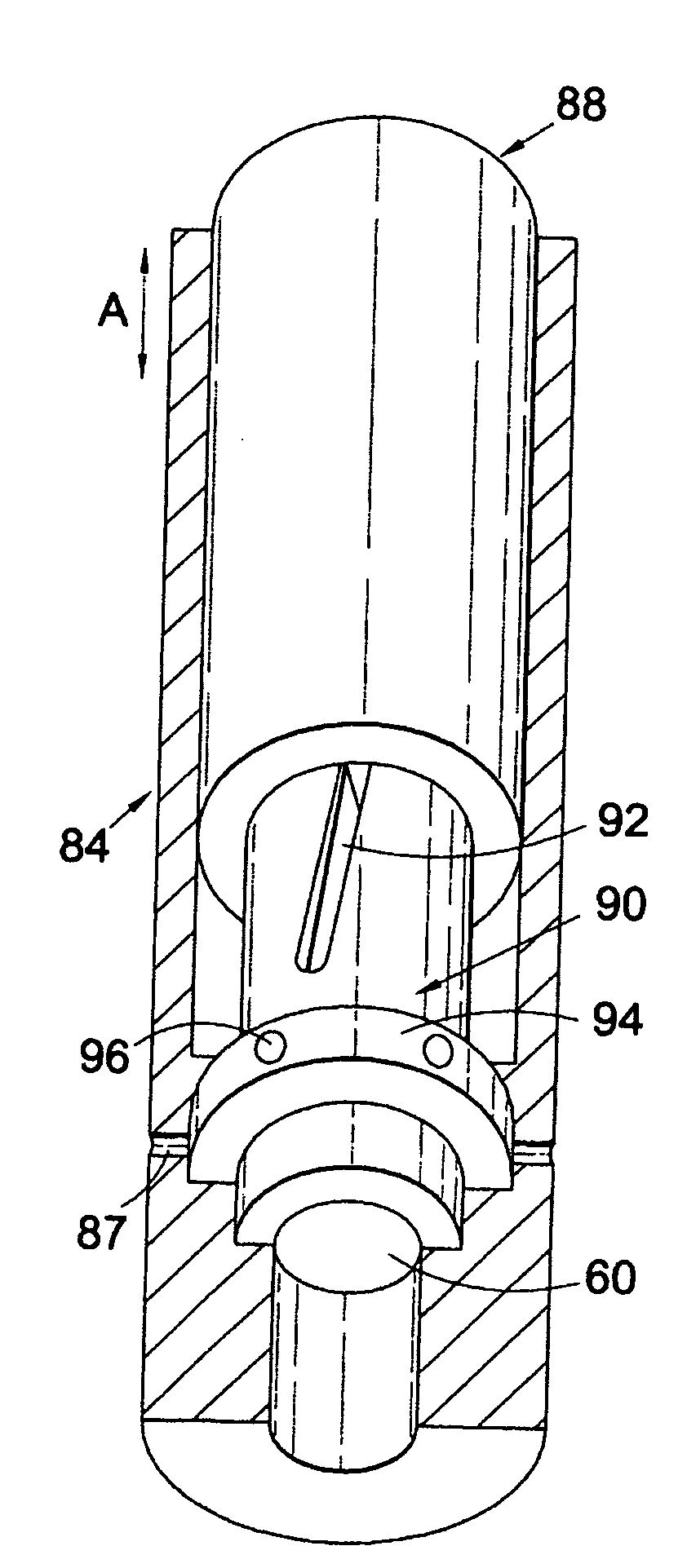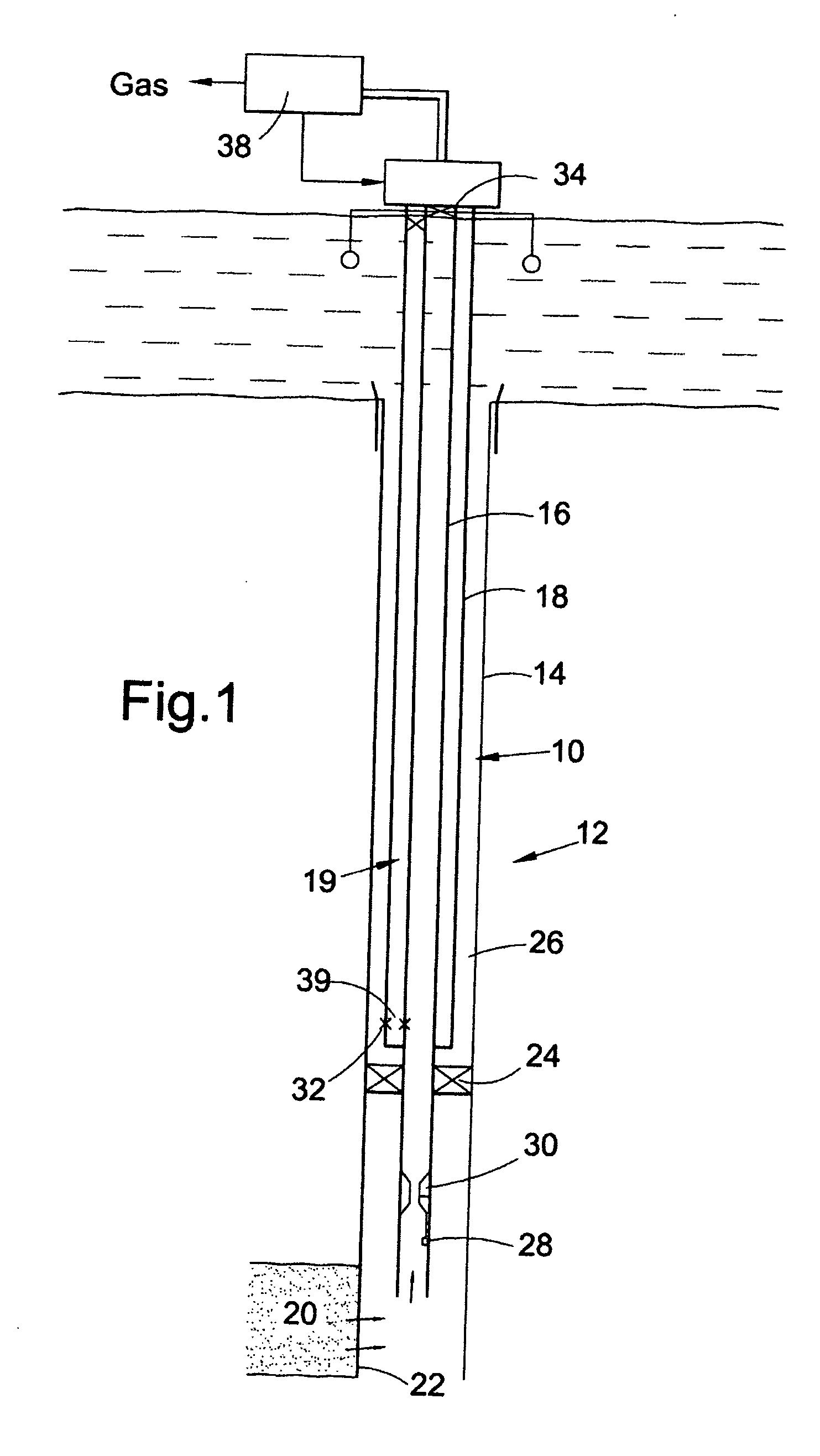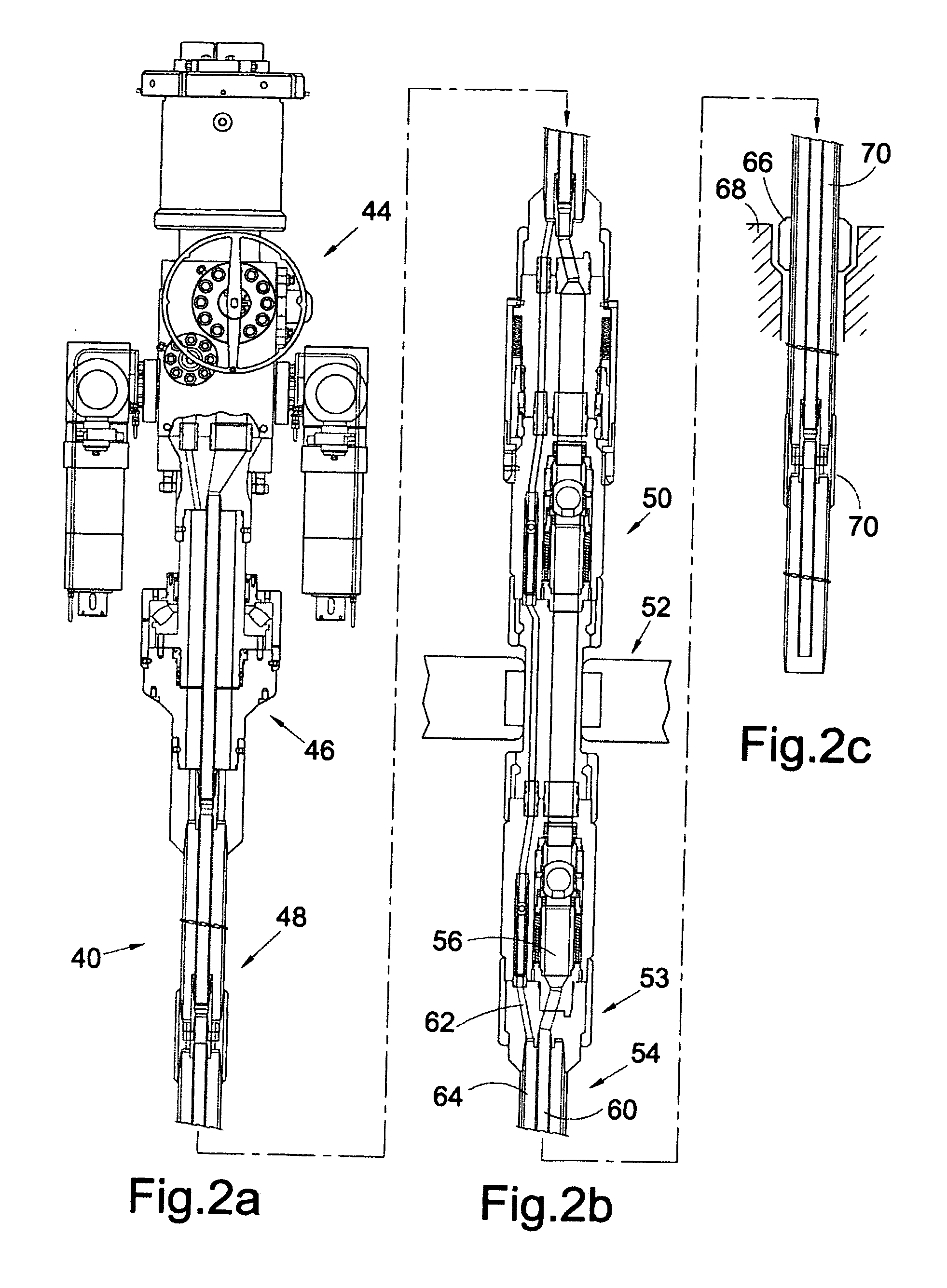Well testing system
a testing system and well technology, applied in the direction of valve operating means/release devices, wellbore/well accessories, sealing/packing, etc., can solve the problems of limited amount of information obtained by the downhole logging system, relatively high risk of pollution, and the effect of reducing the environmental impact of well testing
- Summary
- Abstract
- Description
- Claims
- Application Information
AI Technical Summary
Benefits of technology
Problems solved by technology
Method used
Image
Examples
Embodiment Construction
[0058] Reference is first made to FIG. 1 of the drawings which depicts a low environmental impact test string 10 disposed in a subsea well 12 which has a casing 14. The term ‘string’ is used to denote a plurality of tubular elements which are coupled together at surface and fed downhole to create a structure of continuous conduits through which fluid can flow between the surface and the downhole formations. The test string 10 has an inner main bore conduit 16 and a concentric outer conduit 18 defining an annular formation fluid storage volume 19 therebetween. The inner conduit extends to the formation fluid producing zone 20 at sand face 22. A packer 24 seals the main bore conduit 16 to the casing 14 and creates a well annulus 26 between the conduit 18 and casing 14. Disposed in the main bore 16 is a pressure measuring device 28 and a flowmeter 30 for measuring the pressure of formation fluid as will be described.
[0059] A sleeve valve 32 is disposed in conduit 18 and the sleeve val...
PUM
 Login to View More
Login to View More Abstract
Description
Claims
Application Information
 Login to View More
Login to View More - R&D
- Intellectual Property
- Life Sciences
- Materials
- Tech Scout
- Unparalleled Data Quality
- Higher Quality Content
- 60% Fewer Hallucinations
Browse by: Latest US Patents, China's latest patents, Technical Efficacy Thesaurus, Application Domain, Technology Topic, Popular Technical Reports.
© 2025 PatSnap. All rights reserved.Legal|Privacy policy|Modern Slavery Act Transparency Statement|Sitemap|About US| Contact US: help@patsnap.com



